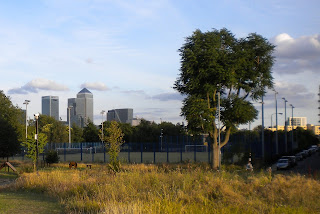It was more than twenty years ago now that an old friend – a veteran of the Falklands war ( and a few others too I shouldn’t wonder ) - had just sold everything he owned and spent his entire savings on 50 acres of uncared for and badly neglected woodlands. Even more daunting was the fact that the whole site was cut in half by a major trunk road - but not deterred with the task ahead, gathering together a small number of like minded friends and volunteers he set about transforming this wilderness into a rather special kind of place.
A WOODLAND TRUST was formed and over next year or so this determined team , and with a little helpful advice from the forestry commission the tangled jungle of what once was ancient forest was by hard work and enterprise transformed into useful and productive woodland. In year one about two acres of forest were completely cleared, then re-landscaped to create pleasant and peaceful sunbathing lawns . The following year smaller clearings of varying sizes were made to allow the sunlight to penetrate and invigorate the undergrowth and natural pathways cut to connect them, with rustic seating here and there for walkers to rest awhile and contemplate nature.
The next part of the project was to create a building for use as admin offices , storage for the Trust and some kind of leisure and social activities for its members. A dedicated team of workers - a few professionals but mainly just ordinary folk - husbands and wives mostly with a few single men thrown in for luck - worked in their spare time utilising whatever skills they already had , with some others even taking evening classes to learn old style artisan trades. And the end result was something quite unique- a magnificent full size copy of a old traditional Kentish Barn , which at the end of the day won a national award.
After the building was fitted out it enabled the Trust management to hold regular themed events for its loyal members throughout the year . The very same skills and ingenuity that were an essential element in the creation of this very this special place came into their own when it came to organising these events and the annual Halloween week end party was a particularly good example. Some of the costumes and make up were so realistic that under different circumstances they might have been part of a really frightening horror movie. !!. The section of woodland paths surroundings the building, decorated with spooky lighting and huge realistic cobwebs made the whole thing seem even more realistic - and as usual a good time was had by all. Even so, its a good job the party was adults only.
After the building was fitted out it enabled the Trust management to hold regular themed events for its loyal members throughout the year . The very same skills and ingenuity that were an essential element in the creation of this very this special place came into their own when it came to organising these events and the annual Halloween week end party was a particularly good example. Some of the costumes and make up were so realistic that under different circumstances they might have been part of a really frightening horror movie. !!. The section of woodland paths surroundings the building, decorated with spooky lighting and huge realistic cobwebs made the whole thing seem even more realistic - and as usual a good time was had by all. Even so, its a good job the party was adults only.
Being an active environmentalist is a fine thing, but government help is very limited and although some woodland products can be sold there’s not a lot of profit in it- if any. Although the primary function of The Woodland Trust is still the protection and preservation of these ancient woodlands, as in almost every area of modern life, over the ensuing years things have changed and the Trust have extended into slightly more profitable areas of business to help support them. But in spite of these changes I still think that it is a fantastic place that holds many wonderful memories for me - and I intend to write more about it when I have the time.













































